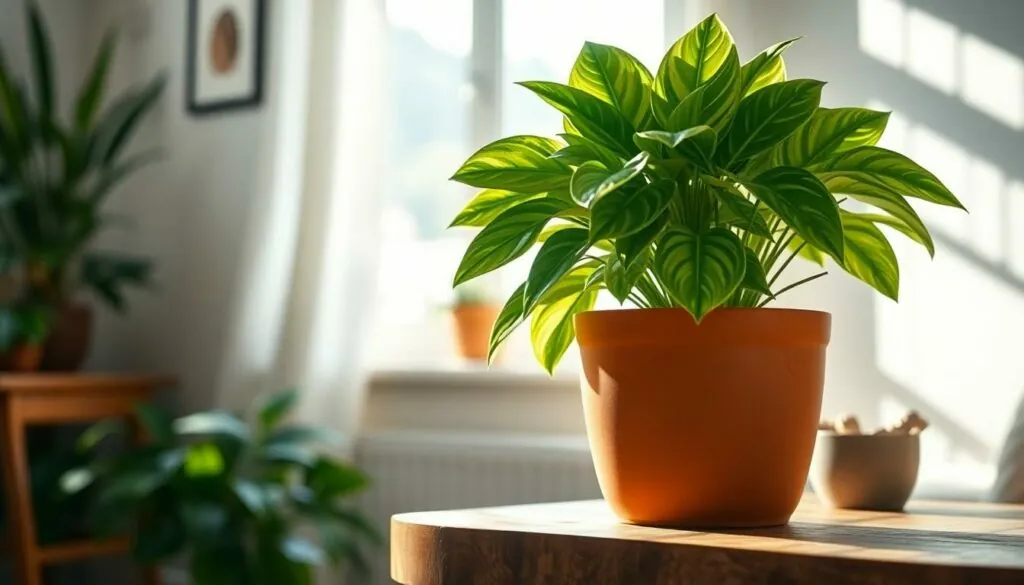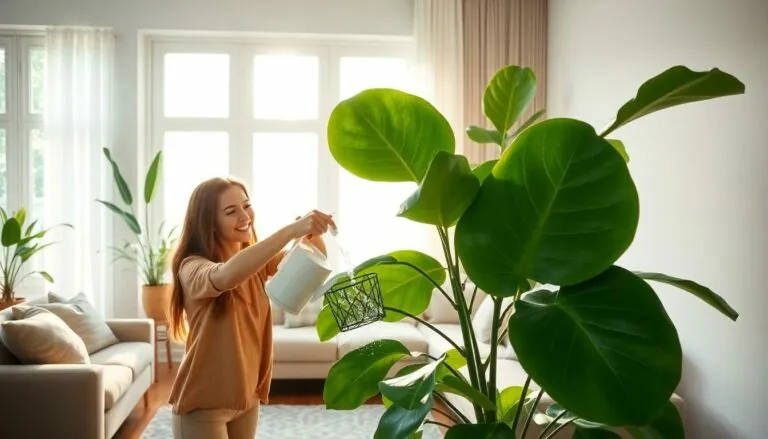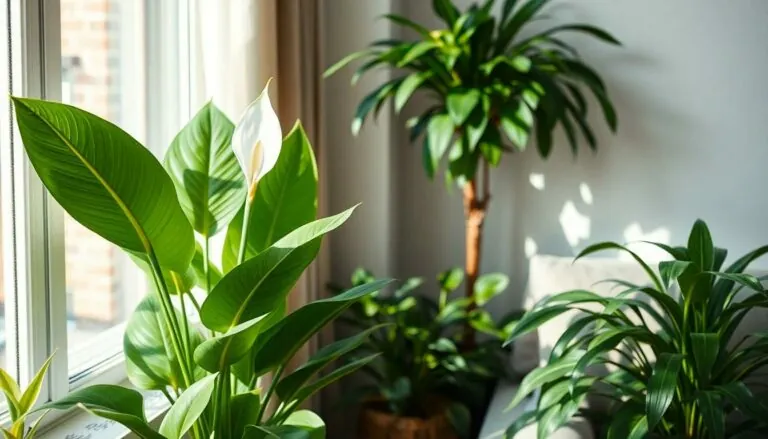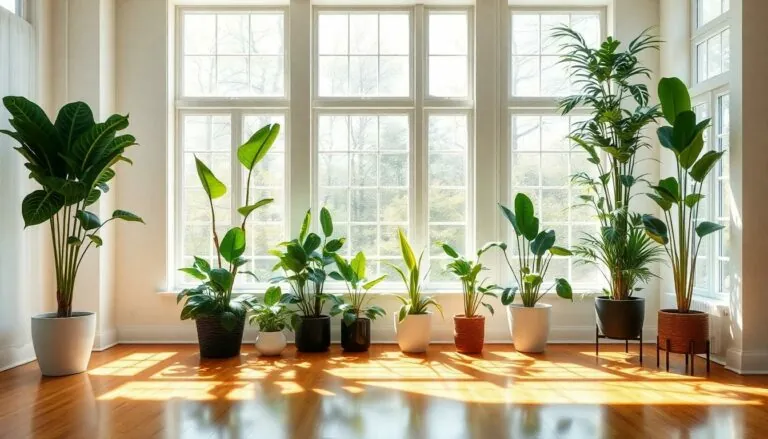Table of Contents
ToggleIf there’s one plant that promises to bring good vibes and a touch of green to any space, it’s the money plant. With its lush leaves and easy-going nature, it’s like the friend who shows up to every party with snacks—always a welcome addition. But don’t let its laid-back attitude fool you; taking care of a money plant isn’t just a walk in the park.
Understanding Money Plants
Money plants, also known as pothos or Epipremnum aureum, thrive as popular houseplants due to their hardiness and aesthetic appeal. These plants bring a touch of nature indoors, requiring minimal care while offering vibrant greenery.
Common Varieties
Several common varieties of money plants flourish in homes. Golden pothos has striking yellow and green marbled leaves. Marble queen features a beautiful mix of white and green foliage. Neon pothos stands out with its bright, almost fluorescent green leaves. Each variety exhibits unique characteristics, providing choices to fit various home styles and preferences.
Ideal Growing Conditions
Money plants prefer bright, indirect sunlight. While they can tolerate low light, insufficient light may hinder growth. Soil should remain well-draining yet moist; overwatering can lead to root rot. Room temperatures between 60°F and 85°F ensure optimal growth conditions. Regularly checking the humidity level helps maintain a thriving environment, ideally around 40-60%.
Watering Guidelines
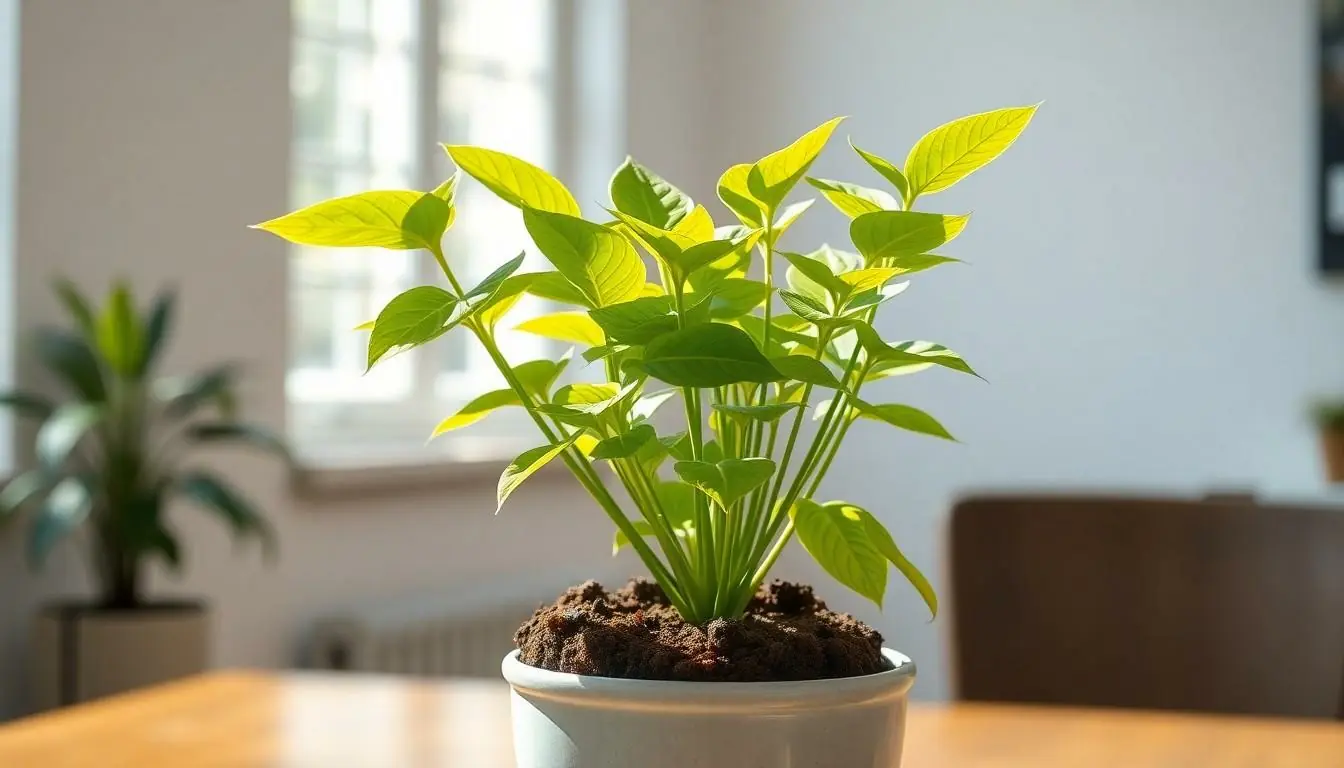
Caring for a money plant involves understanding its watering needs. Proper hydration supports healthy growth and vibrant foliage.
Frequency and Technique
Watering frequency depends on soil moisture and environmental conditions. Checking the top inch of soil serves as a reliable indicator; if dry, it’s time to water. Typically, water every 1 to 2 weeks, allowing excess to drain out of the pot. Use room temperature water to avoid shocking the plant. In warmer months, the plant may need more frequent watering, while in cooler months, less is necessary.
Signs of Overwatering and Underwatering
Identifying watering issues can prevent damage. Yellowing leaves usually indicate overwatering, signaling root rot risk. Droopy leaves often mean underwatering, a clear indication that the plant needs hydration. Brown leaf tips can also suggest insufficient water. Observing these signs promptly allows for quick adjustments, ensuring the plant remains healthy and vibrant. Regular monitoring helps maintain the money plant’s well-being.
Soil and Potting
Selecting the right soil and pot is essential for a healthy money plant. Understanding these components ensures optimal growth and vitality.
Best Soil Mixtures
Well-draining soil mixtures promote robust growth for money plants. A blend of potting soil, perlite, and peat moss works best. This combination retains moisture while preventing root rot. Many growers find that a mixture of 50% potting soil and 50% perlite provides the right balance of drainage and nutrients. Commercial mixes labeled for aroids or houseplants are also suitable. Always check for drainage holes to prevent water accumulation, as money plants thrive in conditions that avoid excess moisture.
Choosing the Right Pot
Choosing the right pot affects the growth and health of a money plant. A pot with drainage holes is crucial for preventing waterlogged soil. Plastic or terracotta pots can be effective; terracotta allows for better air circulation. Selecting a pot that’s 1-2 inches larger than the current root ball encourages growth without overwhelming the plant. Repotting every 1-2 years keeps the plant thriving and offers fresh nutrients. Regularly inspecting the pot will help identify when repotting is necessary, especially when roots start to grow out of the drainage holes.
Light Requirements
Money plants thrive under well-balanced light conditions that encourage growth and vibrancy.
Optimal Light Conditions
Bright, indirect sunlight fosters the best growth for money plants. Placing them near a window with filtered light provides ideal results. This allows their vibrant leaves to remain lush and healthy. Too much direct sunlight can scorch the leaves, so it’s important to monitor their exposure. Varieties such as golden pothos and neon pothos especially benefit from optimal lighting, maintaining their characteristic colors and shapes. Regularly rotating the plant helps ensure even light distribution, promoting uniform growth across all leaves.
Dealing with Low Light Situations
Low light conditions certainly challenge money plant growth. They adapt by becoming leggy, which can diminish their overall appearance. In such environments, it’s essential to provide supplemental light if possible. A grow light can effectively enhance growth when natural light is scarce. Keeping the plant close to artificial light for several hours each day offsets the effects of inadequate sunlight. Regularly checking for signs of distress, such as yellowing or droopy leaves, helps assess their well-being. Adjusting their environment to find the right balance enhances both health and aesthetics.
Pruning and Maintenance
Caring for a money plant involves regular pruning and maintenance. These practices enhance growth and keep the plant healthy.
When and How to Prune
Pruning occurs ideally in spring or early summer, coinciding with the plant’s active growth phase. It’s beneficial to remove yellowing leaves and leggy growth to promote a fuller appearance. Use clean, sharp scissors to make precise cuts just above a leaf node. Trimming 1 to 2 inches from the stem encourages branching and bushiness. Regular pruning maintains an attractive shape while eliminating any unhealthy parts of the plant.
Benefits of Regular Maintenance
Regular maintenance offers numerous advantages for money plants. Enhanced air circulation results from trimming back overcrowded areas, reducing the risk of mold and pests. Healthier foliage emerges when dead or yellowing leaves are removed, creating a vibrant, lush plant overall. Keeping an eye on water and light levels, along with pruning, supports optimal growth conditions. Routine maintenance not only improves aesthetics but also boosts the plant’s longevity.
Common Pests and Diseases
Money plants can face several pests and diseases that affect their health. Identifying these issues early helps maintain the plant’s vitality.
Identifying Pests
Common pests include spider mites, aphids, and mealybugs. Spider mites appear as tiny specks on leaves and thrive in dry conditions. Aphids cluster on new growth and sap moisture from the plant. Mealybugs present as white, cottony masses and damage leaves by extracting nutrients. Checking the undersides of leaves frequently is vital in spotting these pests early. Leaf discoloration often signals a pest problem.
Treatment and Prevention Strategies
Effective treatment involves using insecticidal soap or neem oil. Applying these solutions directly on affected areas eliminates pests without harming the plant. Regularly wiping leaves with a damp cloth also reduces pest build-up. Preventive measures include maintaining humidity and avoiding overcrowding, as these strategies deter pest infestations. Monitoring the plant for signs of distress, such as wilting or stunted growth, remains crucial for effective management.
Caring for a money plant can be a rewarding experience. With the right attention to light, water, and soil conditions, anyone can enjoy the beauty and benefits this resilient houseplant offers. Regular pruning and maintenance not only enhance its appearance but also contribute to its overall health.
By being proactive in identifying pests and ensuring optimal growing conditions, the money plant can thrive for years. This low-maintenance yet striking plant is an excellent addition to any home, bringing life and freshness to indoor spaces. With a little care, the money plant can truly flourish, becoming a vibrant part of any environment.

